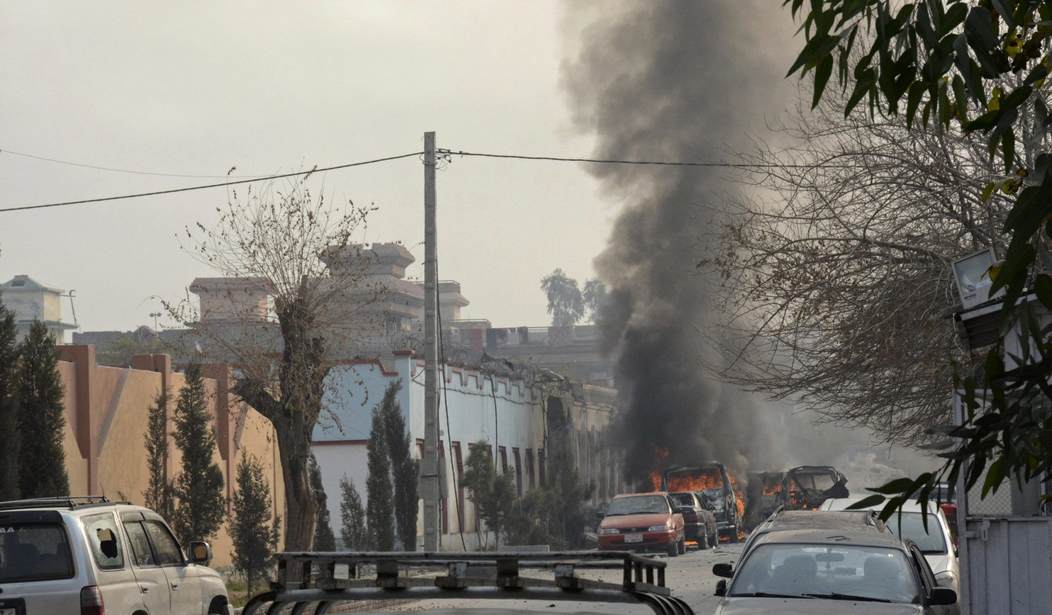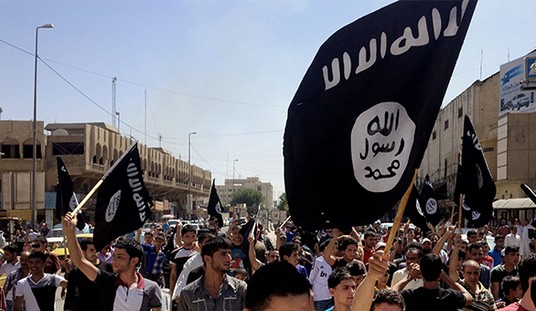What does victory look like in Afghanistan? Why are we still in Syria? We went into Iraq, but didn’t have a plan for getting out?
In all three wars — separate fronts in the same war, really — detractors asked ahead of time, “What’s our exit strategy?” And that is a good, fair, and necessary question to ask. The problem is that it presupposes a more important question, which neither the White House, the Pentagon, nor the State Department ever properly addressed.
What do we hope to accomplish, really?
If you know what you hope to accomplish, the exit strategy pretty much writes itself. Perhaps the problem we’ve had in this Terror Age is one of expectations. Our major wars in the 20th century all had definitive ends, even ones (like Korea and Vietnam) where we fell far short of outright victory. When we were hit on 9/11, it certainly looked like the start of a major war, what with the New York City skyline crumbling, and a kamikaze cruise missile hitting our military’s supreme headquarters. Appearances aside, the 9/11 attacks were not — as we were probably right to fear on 9/12 — the start of a major war. Rather, it was a particularly egregious event in what Austin Bay and Jim Dunnigan termed the “age of little wars.”
Near the end of the Cold War, Bay and Dunnigan peered into the future and saw something like a high-tech version of the past. We may never have to fight another World War against a big-league opponent, and I pray we never do. But the increasing proliferation of inexpensive weapons and violent ideologies means it’s going to be a long time (if ever) before the line between war and peace again becomes a bright one. For the present and the foreseeable future, war looks less like bold arrows drawn across maps all pointing toward victory, and more like the multicolored splotches on the map of what used to be Syria.
ASIDE: A war with China today might look something like an oceanic-and-air-and-space-digital-realm version of the Western Front for most of World War I, in which both sides had the ability to hurt one another very badly, but neither side was strong enough to force a decision. It would likely be fast, ugly, and destructive and disruptive as hell.
The costs of our failure of imagination are adding up. Last week the Washington Post published “the Afghanistan papers,” which revealed what I think most of us had long suspected: That Washington has no idea what to do in Afghanistan, and that it’s been easier just to keep fighting a low-level conflict than to admit we’ve been doing it wrong all this time. The papers detailed nearly two decades of “waste, abuse, and questionable judgment in a host of Afghanistan programs and projects.” WaPo oversold the story — by a lot, apparently trying to make it the next Pentagon Papers. But the stubborn fact remains that we haven’t accomplished much in Afghanistan in large part because we don’t know what we’re supposed to accomplish. So the waste goes on. It isn’t that anyone in the Pentagon is actually evil, it’s just the human tendency toward inertia. But that inertia carries a price in blood and treasure which we and our allies have been paying now for a generation.
Retired U.S. Army Colonel Kevin Benson, formerly of the School of Advanced Military Studies, writes that after an attack like 9/11 — and someday there will almost certainly be another — “the demand for action will be irresistible.” But our previous responses resulted in over-commitments stretching out military forces, our budgets, and the will of the American people. With that in mind, Benson has called for a return to the punitive expedition, which he defines as “a measured, relatively swift, focused response” to enemy action. And its purpose is to “to act with violence and return to home station.” Or as I like to put it: Maximum violence, minimum time. The object is to disrupt the enemy’s ability to plan, to execute his plans, but without over-committing, as one of Benson’s commenters puts it, to “chasing down individual hostile fighters with AKs because as we very well know, they spring up like dragon’s teeth.”
Bestselling author and retired Army intelligence officer Ralph Peters, long before he succumbed to Trump Derangement Syndrome, wrote way back in 2003, “We should take a lesson from the Romans and the Britons before us and recognize the value of punitive expeditions.”
Maybe the people of a “nice” democratic republic like our own would shudder at the thought of engaging in punitive expeditions that sound better suited to the cruel Roman Empire or to haughty British imperialists. But what to call it is more of a marketing decision than a military matter. So slap whatever label you want on them, but brief punitive actions would be the closest thing to peace we’re likely to enjoy in our lifetimes. Not to mention a better option than the long, hard slogs we’ve endured for far too long.
Our open-ended post-9/11 wars have given rise to another issue of critical importance: Our force structure. Before 9/11, most of our military was a heavy force trained and equipped to fight peer or near-peer land adversaries in the First and Second worlds, and navy-against-navy in the deep blue ocean waters. Over-commitment to fighting Third World terrorists left us with lighter ground forces than would be required against, say Russia or China. And our Navy refocused on fighting in the “brown waters” close to shore, against foes armed (at best) with rubber zodiac boats. That kind of ill-preparedness invites aggression, and as I wrote above, we’d really rather not have to fight anyone like China or Russia. Strength is the best deterrent, but it’s going to take time and money, especially in the case of the Navy, to properly restructure.
Compounding things, the unexpected operations tempo of the last 18 years wears out expensive equipment far faster than anyone had planned for, and extended deployments are hard even for those in non-combat roles. The money saved from reduced commitments to over-long wars that still have no end in sight, could be put to good use on force restructuring.
Punitive expeditions also dovetail with President Trump’s “America First” doctrine, in which we don’t go bashing around the world trying to install governments like our own in every little country that pisses us off enough. And, I don’t need to add, failing at it.
I’m no isolationist. We have commitments to important allies in Europe and the Pacific Rim, and those commitments make the world a safer and wealthier place. But over-commitment to the Middle East, whose oil we no longer need in such vast quantities, has left us with a military not entirely suited, to put it lightly, to its most important roles.
A rattlesnake, deadly when it needs to be, would like nothing better than to be left alone. Its infamous rattle is a warning to stay away, not an invitation to a fight. Think of our near-future military as a coiled rattlesnake ready to strike. Our main force, structured to deter near-peer adversaries, would be the warning rattle. A small, very lethal, and extremely mobile punitive force would be the fangs, ready at an instant to disrupt terror cells threatening American lives or interests — before returning almost immediately to the coiled position.
A rattlesnake bearing the warning “Don’t tread on me” is a familiar call to American patriots, and a suitable warning to America’s foes. It’s the right posture for our armed forces, and it’s past time to adopt it.










